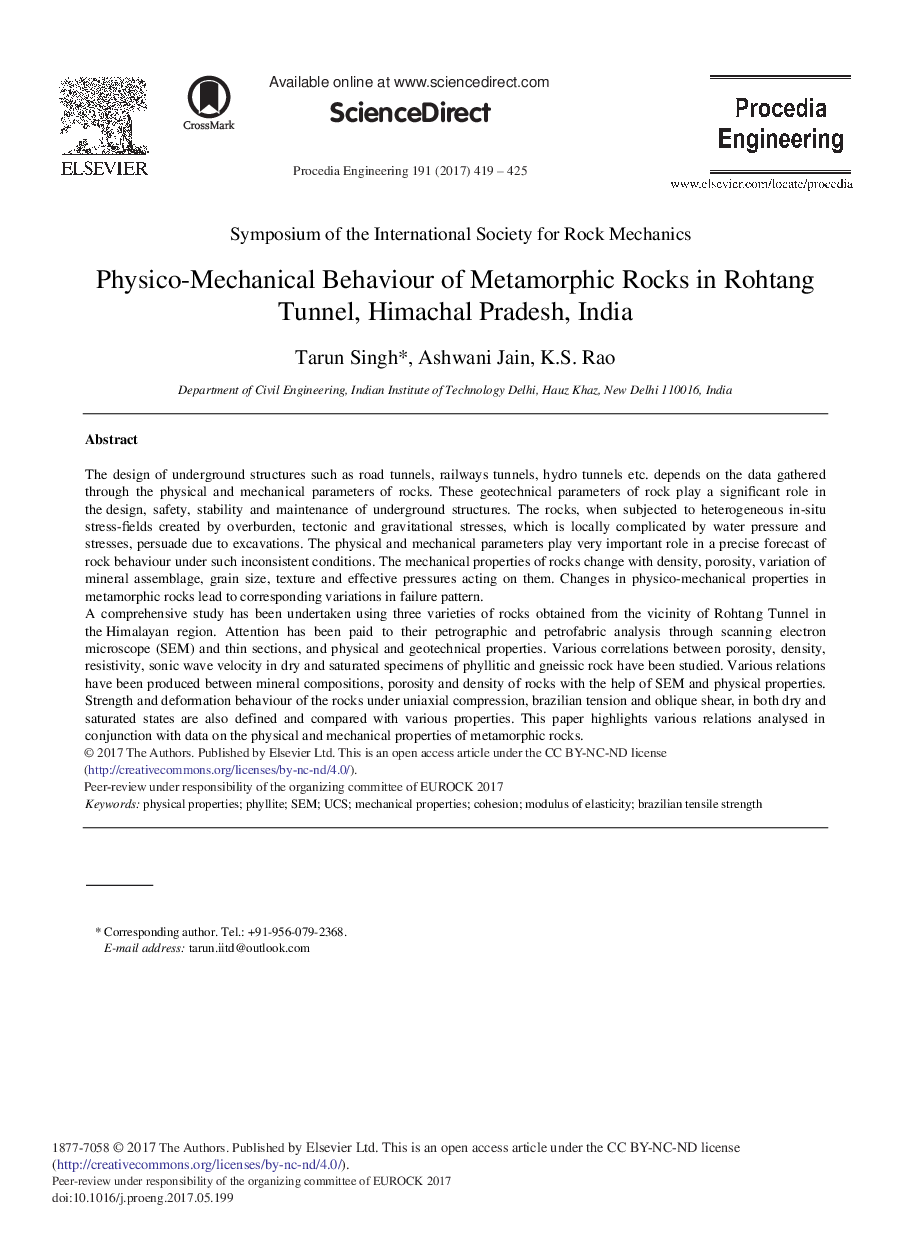| کد مقاله | کد نشریه | سال انتشار | مقاله انگلیسی | نسخه تمام متن |
|---|---|---|---|---|
| 5027525 | 1470635 | 2017 | 7 صفحه PDF | دانلود رایگان |
The design of underground structures such as road tunnels, railways tunnels, hydro tunnels etc. depends on the data gathered through the physical and mechanical parameters of rocks. These geotechnical parameters of rock play a significant role in the design, safety, stability and maintenance of underground structures. The rocks, when subjected to heterogeneous in-situ stress-fields created by overburden, tectonic and gravitational stresses, which is locally complicated by water pressure and stresses, persuade due to excavations. The physical and mechanical parameters play very important role in a precise forecast of rock behaviour under such inconsistent conditions. The mechanical properties of rocks change with density, porosity, variation of mineral assemblage, grain size, texture and effective pressures acting on them. Changes in physico-mechanical properties in metamorphic rocks lead to corresponding variations in failure pattern.A comprehensive study has been undertaken using three varieties of rocks obtained from the vicinity of Rohtang Tunnel in the Himalayan region. Attention has been paid to their petrographic and petrofabric analysis through scanning electron microscope (SEM) and thin sections, and physical and geotechnical properties. Various correlations between porosity, density, resistivity, sonic wave velocity in dry and saturated specimens of phyllitic and gneissic rock have been studied. Various relations have been produced between mineral compositions, porosity and density of rocks with the help of SEM and physical properties. Strength and deformation behaviour of the rocks under uniaxial compression, brazilian tension and oblique shear, in both dry and saturated states are also defined and compared with various properties. This paper highlights various relations analysed in conjunction with data on the physical and mechanical properties of metamorphic rocks.
Journal: Procedia Engineering - Volume 191, 2017, Pages 419-425
